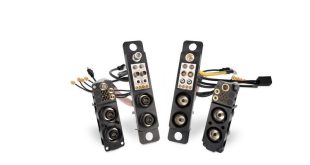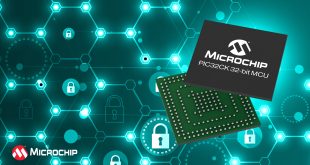 Don’t you just hate it when your mobile device battery starts to run low, especially when you aren’t expecting it? It’s one thing to have a low battery after a busy day or running around. It’s quite another to find that you’re getting into the red zone before lunch. What’s happening?
Don’t you just hate it when your mobile device battery starts to run low, especially when you aren’t expecting it? It’s one thing to have a low battery after a busy day or running around. It’s quite another to find that you’re getting into the red zone before lunch. What’s happening?
Today’s mobile devices can drain batteries faster than their predecessors, for a variety of reasons. Factors ranging from the size and brightness of your phone’s display to the number of connections you’re running can affect your battery life. The chipset matters, too, with the newer generation of chips being more power hungry than what you had in your old device. And, 5G can be a culprit. Connecting to 5G networks tends to consume more power than 4G.
So, what can you do about this problem? One option is to carry a charging cable wherever you go and hope that the nearest coffee shop will let you plug in. Or, you can get a portable charger, also known as a “portable power bank”. These are basically powerful batteries that enable you to plug in your device and juice your battery right back up. They used to be a bit oversized, but today’s portable chargers are pretty compact, considering how much electricity they hold.
Common types of mobile power and the technology’s continuing evolution
Portable power banks are not the only way to charge a device on the go. Wireless chargers enable you to power up your phone without plugging it in. Some wireless chargers are available for free in public places like airports. If you have to carry your wireless charger with you, however, that sort of defeats the purpose. Also, not every device can be charged this way.
Alternatively, you can take advantage of a power management integrated circuit (PMIC) to reduce your need for on-the-go recharging in the first place. These chips are designed to manage power consumption so the device uses up battery capacity more slowly. This can be quite helpful for prolonging battery life, but you have to have the PMIC on your device. It’s not an accessory you can buy like a power bank.
The simplest and most effective way to recharge a device using mobile power is a power bank. With these accessories, what matters is the underlying technology. Power banks can leverage several different technologies, each with its pluses and minuses.
- Lithium-ion (Li-Ion) batteries—These are the current industry standard. They offer high energy density, along with a long lifecycle. They’re also increasingly economical, with many low-cost options available to consumers. Potential issues with Li-Ion batteries include degradation—a tendency for the battery to wear out rapidly—and safety problems. Li-Ion batteries are susceptible to a problem known as “thermal runaway.” This is a chain reaction inside the battery that can cause overheating or even explosions. The power bank’s Battery Management System (BMS) addresses this risk by monitoring the battery’s charge and discharge to make sure they are functioning safely and not overheating.
- Gallium nitride (GaN) power chargers—GaN chargers are showing themselves to be transformative in the mobile power category. A next-generation semiconductor material, GaN delivers greater efficiency and the ability to work with higher voltages than chargers built with regular silicon. The results are faster charging and more compact power bank designs.
Fast power delivery (PD) and USB-C charging options are also making new mobile power options available to device owners. Fast PD, e.g., the Qualcomm Quick Charge, is something that’s built into your phone, versus an accessory you buy. The core of Fast PD is the use of a USB-C connection to charge the phone. Unlike the old USB-A connector, which limited charging to 2.5 watts of power, USB-C enables up to 15 watts! That’s a big difference, translating into charges taking minutes, not hours. When combined with a mobile power bank, Fast PD can make a big difference in the mobile charging experience.
WIN SOURCE and mobile power
WIN SOURCE offers its customers many mobile power options. The company has an extensive battery inventory, coupled with a specialised knowledge base of mobile charging technologies. As one of the world’s leading distributors, WIN SOURCE complements its depth of product and in-house expertise with a team of professionals who respond quickly to customers’ shipping needs. WIN SOURCE is also known for innovating with customers around the world who have individual requirements—making the right high-quality assortment of battery accessories available as the ideal solution for sophisticated design and engineering in the mobile power context.
Summary
Mobile device use is not getting less common or less demanding on device batteries. Pervasive 5G and the Internet of Things (IoT) are two drivers of this trend. As a result, mobile power is rapidly becoming a “must have” accessory for consumers, rather than a “nice to have.” The good news is that consumers have many mobile charging options, and the range of technologies available continues to expand. Newer, faster, and more economical mobile power products are making their way to the market all the time. Challenges remain, including safety and product lifespan. WIN SOURCE is committed to being a solution provider that enables businesses in the mobile power category to thrive and maintain a strong competitive advantage even as the market continues to evolve.
 CIE Components in Electronics
CIE Components in Electronics



